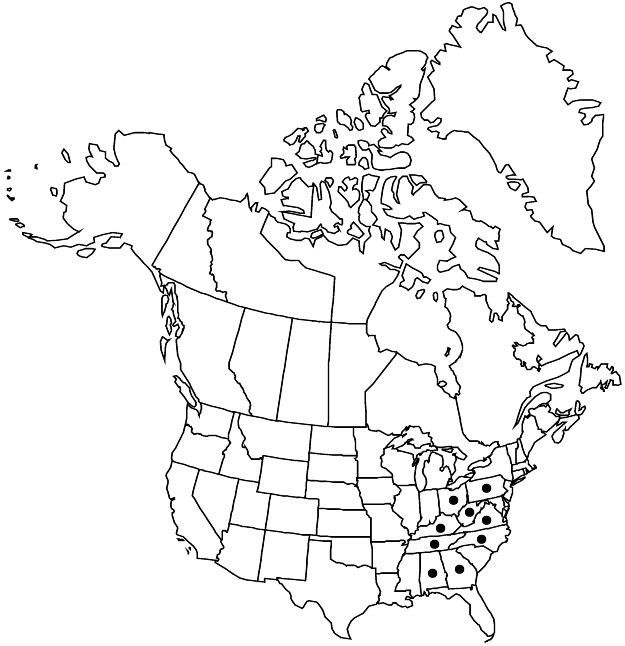Difference between revisions of "Spiraea virginiana"
Bull. Torrey Bot. Club 17: 314. 1890.
FNA>Volume Importer |
FNA>Volume Importer |
(No difference)
| |
Revision as of 20:37, 24 September 2019
Shrubs, 30–40 dm. Stems erect to arching or prostrate, densely branched. Leaves: petiole 2–5 mm; blade ovate to oblanceolate, 3–5 × 1–1.5 cm (length 3 times width), membranous, base acute, margins entire or dentate teeth 1–4 in distal 1/4 of blade, mucronate, number of primary and secondary serrations 1 times number of secondary veins (excluding inter-secondary veins), venation pinnate cladodromous, secondary veins not prominent, apex acute to acuminate, abaxial surface glaucous, mostly glabrous, adaxial glabrous. Inflorescences mostly terminal, corymbiform or hemispheric panicles, 2–8 × 5–22 cm height 0.5–1 times diam.; branches frequently in axils of leaves, usually glabrous or pubescent, sometimes villous. Pedicels 1–3 mm, usually glabrous or pubescent, sometimes villous. Flowers 5–7 mm diam.; hypanthia turbinate to campanulate, 1.2–1.8 mm, surfaces glabrous or pubescent; sepals triangular, 1–1.2 mm; petals yellowish white, greenish white, or translucent white, ovate to orbiculate, 1.8–2 mm; staminodes 0; stamens 25–45, 2 times petal length. Follicles oblanceoloid, 1.5–2 mm, shiny, glabrous.
Phenology: Flowering May–Jul; fruiting Jun–Sep.
Habitat: Riparian zones of rocky stream reaches with high flows capable of scour and deposition of sediments
Elevation: 200–1000 m
Distribution

Ala., Ga., Ky., N.C., Ohio, Pa., Tenn., Va., W.Va.
Discussion
Of conservation concern.
Spiraea virginiana is endemic to the southern Blue Ridge and Appalachian Plateau physiographic provinces. In stream and river reaches, where there is little variation in flow volume and velocity, available habitat for S. virginiana would decline over time without scour and redeposition of sediments. The species reproduces primarily through asexual propagation: the stems break during high flows, are transported and deposited in sediments, and take root, establishing plants (D. W. Ogle 1991b; C. M. Anders and Z. E. Murrell 2001). Ogle (1991, 1991b) conducted a comprehensive analysis of the species and found viable seed to be rare on individuals found within local populations, confined to a single stream corridor. When plants from different populations were brought together in cultivation, abundant viable seed was produced (Ogle 1991b).
All populations of Spiraea virginiana examined by J. R. Brzyski and T. M. Culley (2011) had higher levels of genetic differentiation among populations, and lower values of genotypic richness within populations, than would be expected for a clonal organism.
Spiraea virginiana is in the Center for Plant Conservation’s National Collection of Endangered Plants.